The structure at 1622 Chestnut St. conjures images of men speaking into waffle-shaped microphones with funny, high-pitched voices and slick looking moustaches. An art-deco survivor flanked by chain stores like Men’s Wearhouse and RadioShack, the building shown below in a photo taken from the Temple University Libraries Digital Collection, was erected in 1933.

In 1933. Half photo, half illustration, all deco
In just a decade of operation, the small AM station WCAU had moved from the back of an electrician’s Market Street shop to this location. According to Alan J. Heavens’ article for Philly.com, this structure was the first building in the United States designed with the expressed intent of housing a radio station. Under the ownership of the newly forged Columbia Broadcasting System (CBS), the radio station began broadcasting at the familiar frequency of 1210. The image below, taken from the Works Progress Administration’s 1942 Land Use Map, shows the station location during its prime years of operation.
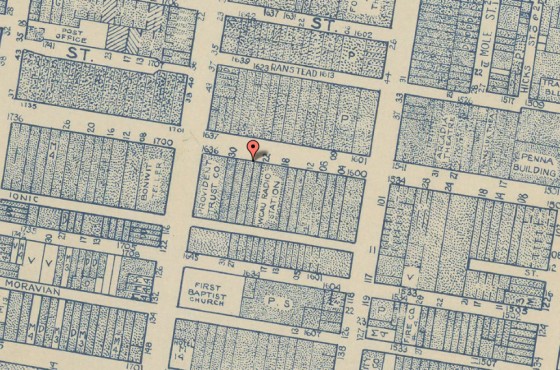
In 1942
According to Keystone Infotek, WCAU followed industry trends in the early 40s and began experimenting with the FM format. After a few moves on the dial, WCAU landed on 102.9 in 1945. Records are spotty, but we suspect they played a lot less Journey back then. When the Philadelphia Record purchased WCAU AM-FM in 1946, only to be purchased itself by the Evening Bulletin a year later, the building then also commanded WPEN’s 950 AM, 98.1 FM and, most importantly, a construction permit for WPEN-TV. This would become Channel 10, Philadelphia’s third major network. The 1948 photo below, taken from the Temple collection, shows the kind of exciting programming offered by Channel 10 in the early days.
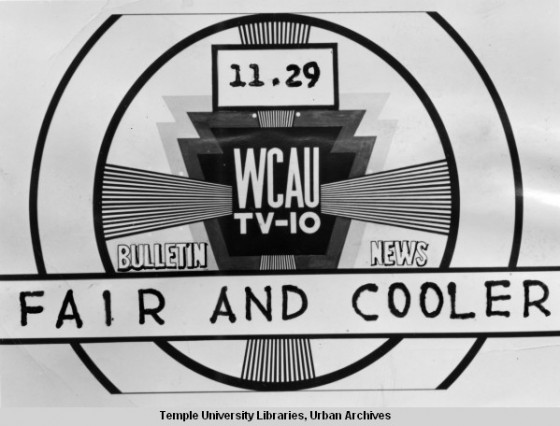
Night owl programming in 1948
According to Philaphilia, the station call letters visible on the tower protruding from the building would light up during live broadcasts. In 1952, WCAU moved out to a City Line Avenue facility designed specifically for television broadcasting. The photo below, taken from The Athenaeum of Philadelphia, shows the Chestnut Street building in 1957, the year in which WHYY became its primary resident.
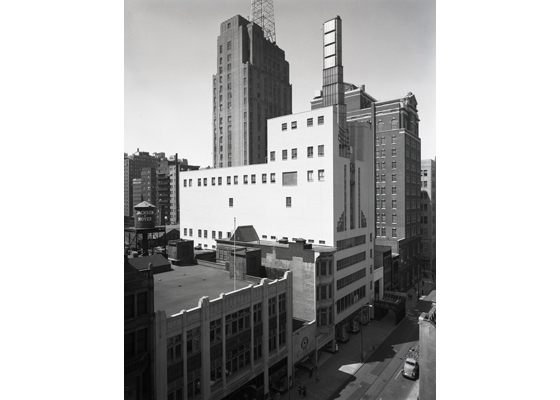
In 1957
The non-commercial network conducted television and radio broadcasts from this location for eleven years. Upon its departure, the structure was left to disrepair until 1980, when the Art Institute of Philadelphia purchased and rehabilitated it. A comprehensive restoration would be conducted with considerable deference to the building’s original design, rendering a fairly compelling facsimile of its predecessor minus the tower.
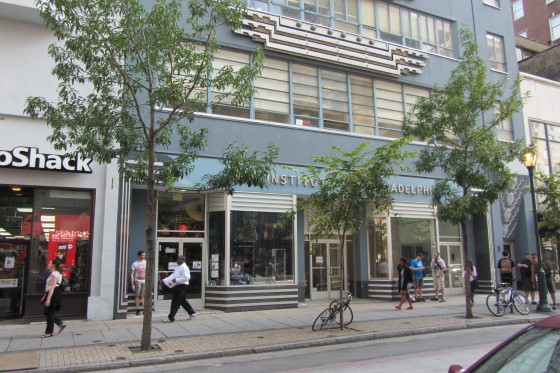
Art Institute of Philadelphia, in 2012
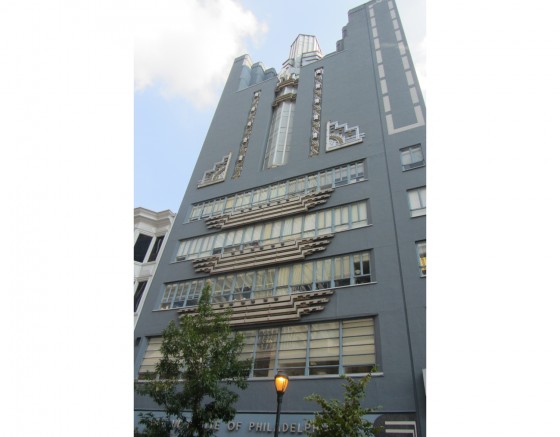
Looking up, again in 2012
–David Tomar
